Aviation Weather
full text of the classic FAA guide
STRUCTURAL ICING
Two conditions are necessary for structural icing in flight: (1) the aircraft must be flying through visible water such as rain or cloud droplets, and (2) the temperature at the point where the moisture strikes the aircraft must be 0° C or colder. Aerodynamic cooling can lower temperature of an airfoil to 0° C even though the ambient temperature is a few degrees warmer.
Supercooled water increases the rate of icing and is essential to rapid accretion. Supercooled water is in an unstable liquid state; when an aircraft strikes a supercooled drop, part of the drop freezes instantaneously. The latent heat of fusion released by the freezing portion raises the temperature of the remaining portion to the melting point. Aerodynamic effects may cause the remaining portion to freeze. The way in which the remaining portion freezes determines the type of icing. The types of structural icing are clear, rime, and a mixture of the two. Each type has its identifying features.
CLEAR ICE
Clear ice forms when, after initial impact, the remaining liquid portion of the drop flows out over the aircraft surface gradually freezing as a smooth sheet of solid ice. This type forms when drops are large as in rain or in cumuliform clouds.
Figure 90 illustrates ice on the cross section of an airfoil, clear ice shown at the top. Figures 91 and 92 are photographs of clear structural icing. Clear ice is hard, heavy, and tenacious. Its removal by deicing equipment is especially difficult.
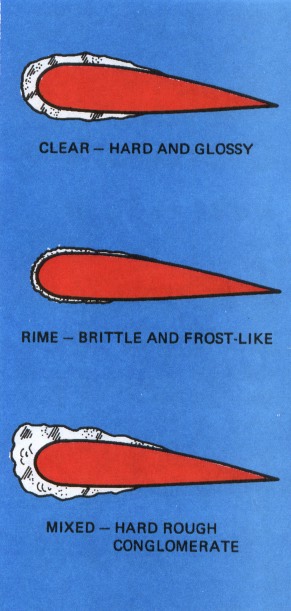
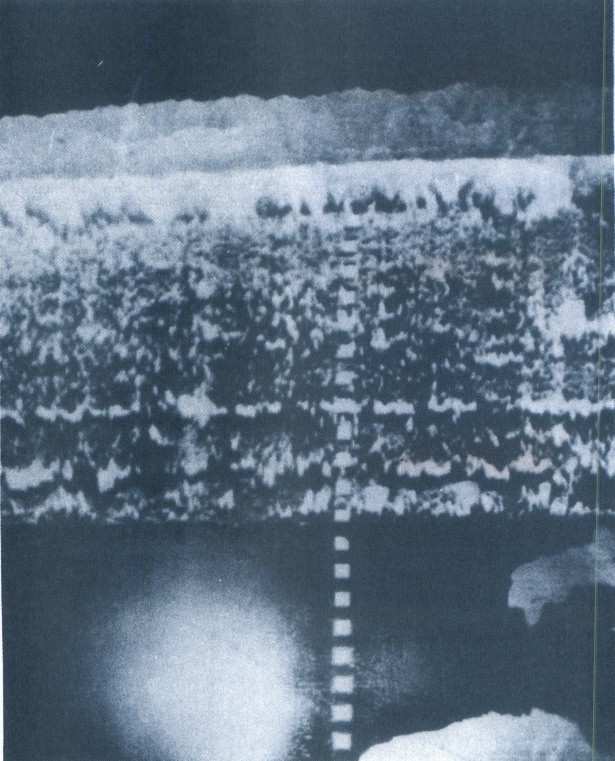
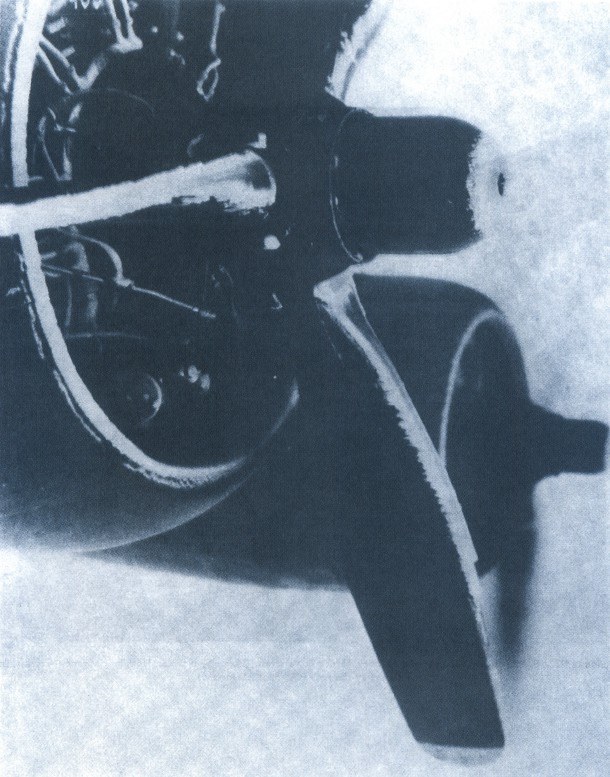
RIME ICE
Rime ice forms when drops are small, such as those in stratified clouds or light drizzle. The liquid portion remaining after initial impact freezes rapidly before the drop has time to spread over the aircraft surface. The small frozen droplets trap air between them giving the ice a white appearance as shown at the center of figure 90. Figure 93 is a photograph of rime.
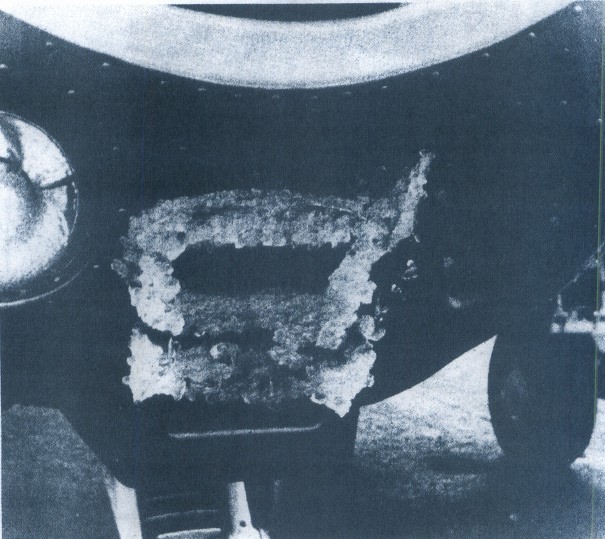
Rime ice is lighter in weight than clear ice and its weight is of little significance. However, its irregular shape and rough surface make it very effective in decreasing aerodynamic efficiency of airfoils, thus reducing lift and increasing drag. Rime ice is brittle and more easily removed than clear ice.
MIXED CLEAR AND RIME ICING
Mixed ice forms when drops vary in size or when liquid drops are intermingled with snow or ice particles. It can form rapidly. Ice particles become imbedded in clear ice, building a very rough accumulation sometimes in a mushroom shape on leading edges as shown at the bottom of figure 90. Figure 94 is a photo of mixed icing built up on a pitot tube.
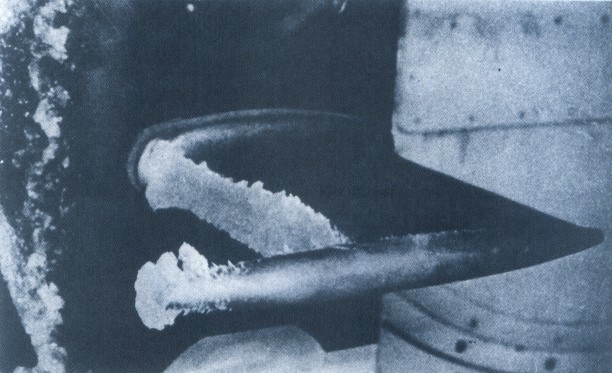
ICING INTENSITIES
By mutual agreement and for standardization the FAA, National Weather Service, the military aviation weather services, and aircraft operating organizations have classified aircraft structural icing into intensity categories. Section 16 of AVIATION WEATHER SERVICES (AC 00-45) has a table listing these intensities. The table is your guide in estimating how ice of a specific intensity will affect your aircraft. Use the table also in reporting ice when you encounter it.
Table of Contents
Previous Section: Icing
Next Section: Induction System Icing
A PDF version of this book is available here. You may be able to buy a printed copy of the book from amazon.com.
